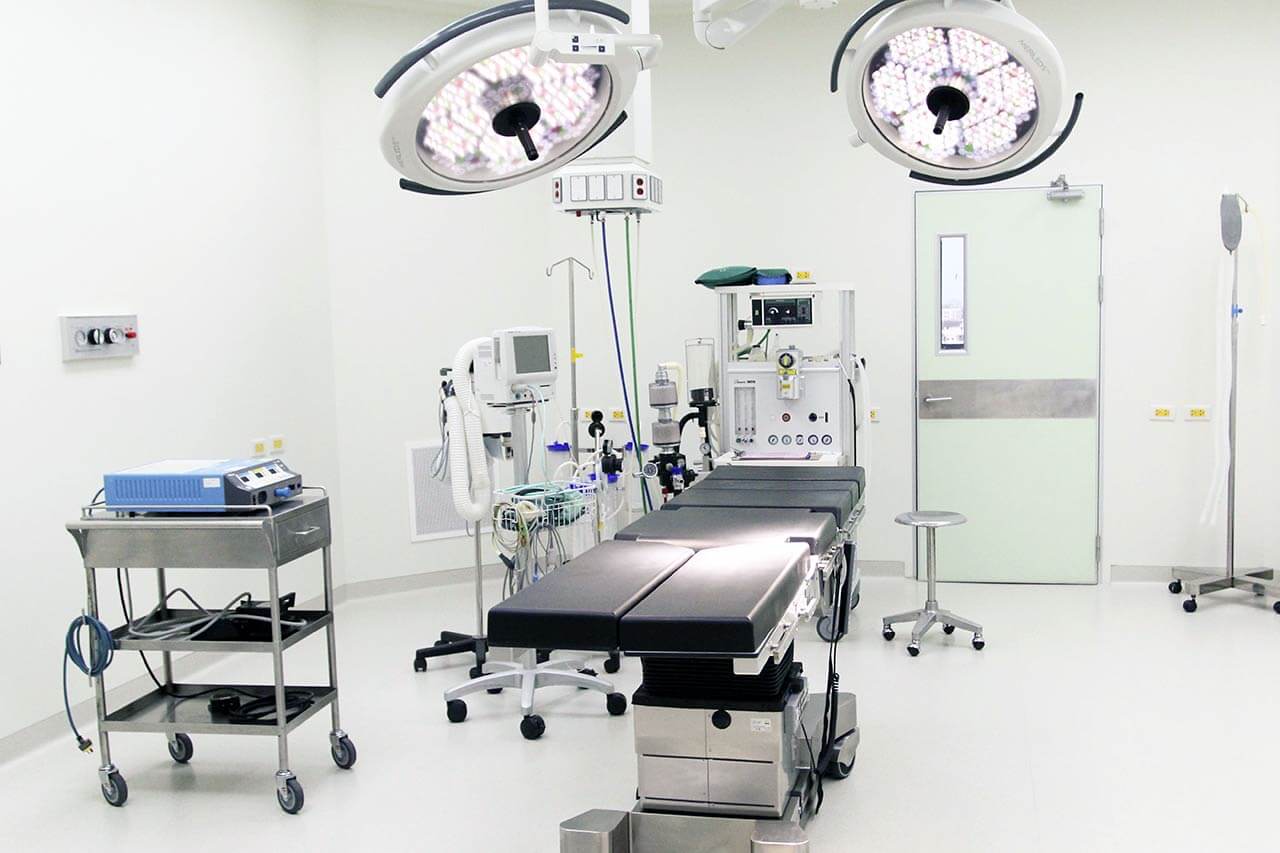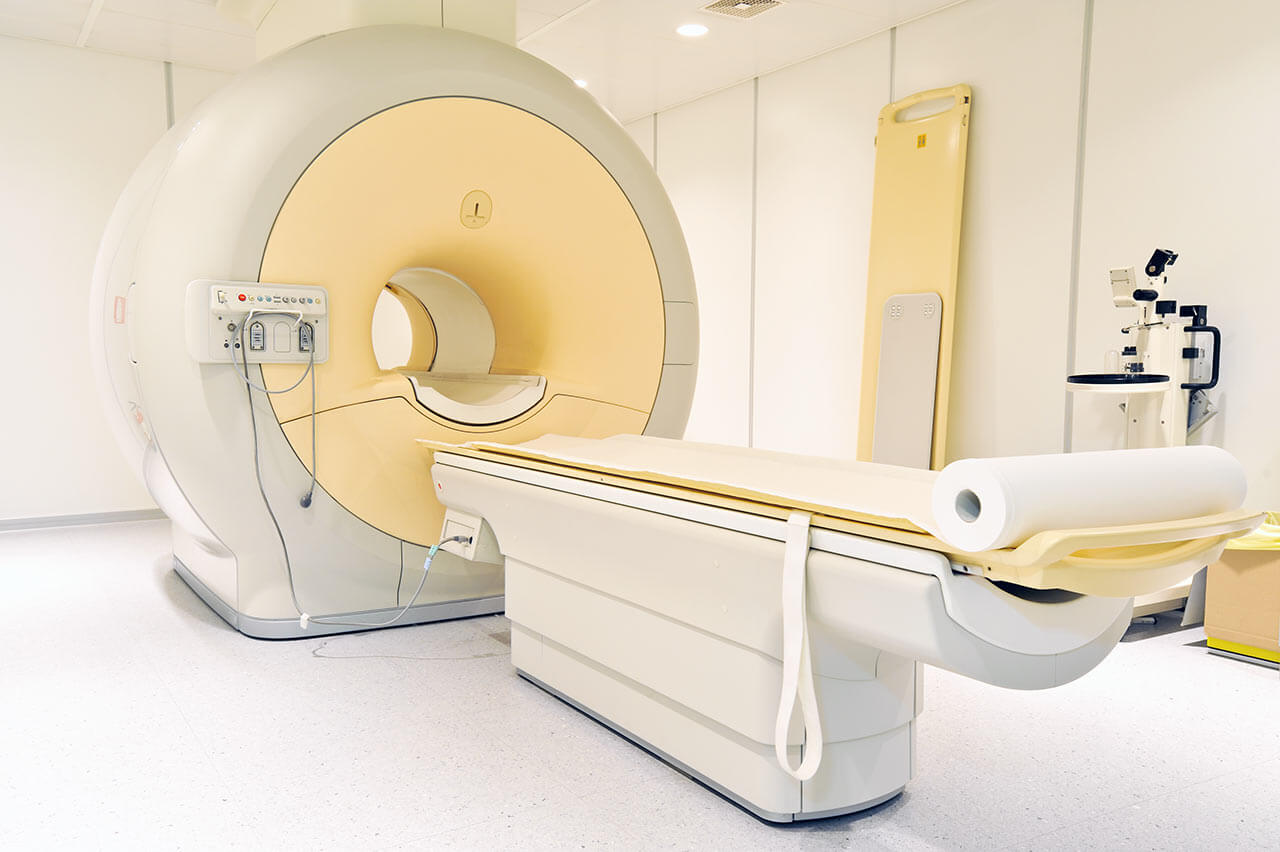
The program includes:
- Initial presentation in the clinic
- clinical history taking
- review of medical records
- physical examination
- laboratory tests:
- complete blood count
- general urine analysis
- biochemical analysis of blood
- TSH-basal, fT3, fT4
- tumor markers (AFP, CEA, СА-19-9)
- inflammation indicators (CRP, ESR)
- indicators of blood coagulation
- abdominal ultrasound scan
- CT/MRI of abdomen
- preoperative care
- percutaneous embolization (coiling) or chemoembolization
- symptomatic treatment
- cost of essential medicines
- nursing services
- elaboration of further recommendations
Indications
- Inoperable liver metastases
- Poor response to systemic chemotherapy
Treatment is not indicated in:
- Presence of extrahepatic metastases
- Affection of more than 70% of the liver
How program is carried out
During the first visit, the doctor will conduct a clinical examination and go through the results of the available diagnostic tests. After that, you will undergo the necessary additional examination, such as the assessment of liver and kidney function, ultrasound scan, CT scan and MRI. This will allow the doctor to determine which vessels are feeding the tumor and its metastases, as well as determine how well you will tolerate the procedure.
Chemoembolization begins with local anesthesia and catheterization of the femoral artery. The thin catheter is inserted through a few centimeters long incision of the blood vessel. The doctor gradually moves the catheter to the vessel feeding the primary tumor or its metastases. The procedure is carried out under visual control, an angiographic device is used for this. The vascular bed and the position of the catheter in it are displayed on the screen of the angiograph.
When the catheter reaches a suspected artery, a contrast agent is injected through it. Due to the introduction of the contrast agent, the doctor clearly sees the smallest vessels of the tumor and the surrounding healthy tissues on the screen of the angiograph. After that, he injects emboli into the tumor vessels through the same catheter.
Emboli are the spirals or the liquid microspheres. The type of embolus is selected individually, taking into account the diameter of the target vessel. When carrying out chemoembolization, a solution of a chemotherapy drug is additionally injected into the tumor vessel. Due to the subsequent closure of the vessel lumen with an embolus, the chemotherapy drug influences the tumor for a long time. In addition, the drug does not enter the systemic circulation, which allows doctors to use high doses of chemotherapeutic agents without the development of serious side effects. Chemoembolization leads to the destruction of the tumor or slowing down its progression.
After that, the catheter is removed from the artery. The doctor puts a vascular suture on the femoral artery and closes it with a sterile dressing. During chemoembolization, you will be awake. General anesthesia is not used, which significantly reduces the risks of the procedure and allows performing it on an outpatient basis, avoiding long hospital stay.
After the first procedure, you will stay under the supervision of an interventional oncologist and general practitioner. If necessary, you will receive symptomatic treatment. As a rule, a second chemoembolization procedure is performed in 3-5 days after the first one in order to consolidate the therapeutic effect. After that, you will receive recommendations for further follow-up and treatment.
Required documents
- Medical records
- Abdominal ultrasound (if available)
- MRI/CT scan of the abdomen (if available)
- Biopsy results (if available)
Service
You may also book:
 BookingHealth Price from:
BookingHealth Price from:
About the department
The Department of Adult and Pediatric Diagnostic, Interventional Radiology at the Hospital Schwabing Munich offers the full range of imaging diagnostic tests and image-guided interventional therapeutic procedures. Medical care is provided on an inpatient and outpatient basis. The team of the department's doctors provides its services to both adults and young patients. The department has at its disposal high-tech equipment, which allows the doctors to detect the slightest impairments in the anatomical structures of the human body. The diagnostic results are considered at regular boards with the participation of all necessary specialists in related fields. In addition, the department uses an innovative system for storing and managing diagnostic data, allowing doctors in all departments to have unhindered access to the patient's imaging results at any time. The department's radiologists strictly adhere to the current radiation protection standards, and therefore the radiation has a minimal effect on the human body. The Chief Physician of the department is Prof. Dr. med. Andreas Saleh.
The patients' health is in the safe hands of the highly qualified medical team consisting of 55 employees. The department annually provides its diagnostic and therapeutic services to more than 55,000 patients, which confirms the exceptional competence of the department's specialists. The department's doctors have at their disposal state-of-the-art digital X-ray systems and X-ray equipment with pulsed radiation, ultrasound scanners, two multislice computed tomography scanners, two powerful 1 Tesla and 3 Tesla magnetic resonance imaging systems, devices for angiography and interventional therapeutic procedures on the vessels, mammography scanners for a comprehensive breast examination in women. The medical equipment meets the current requirements of German medicine and allows the doctors to detect various pathologies at the initial stages, prior to the manifestation of the first symptoms.
The department's diagnostic equipment is adapted for imaging tests in children of all age groups. Whenever possible, ultrasound scanning or magnetic resonance imaging are preferred. If X-ray is still required, then it is performed in such a way that the child receives a minimum dose of radiation. Of particular interest in the field of pediatric radiology is the diagnostics of abdominal diseases, diagnostic and therapeutic puncture procedures, CT and MRI scanning of all organs of the child's body, as well as angiography. Some diagnostic tests in children are performed under general anesthesia.
The range of the department's therapeutic interventional procedures includes many options, ranging from interventional pain therapy (blockade, infiltration), placement of port systems for dialysis and chemotherapy, balloon dilation and stent implantation for the treatment of occlusive peripheral arterial disease of the lower limbs, radiofrequency ablation, embolization and chemoembolization for the treatment of tumors to the correction of vascular malformations and treatment of pelvic congestion syndrome. Prior to any therapeutic procedure, radiologists jointly with the specialists from related fields assess the reasonability of such treatment and the expected result.
The department's range of medical services includes:
- Diagnostic radiology
- Conventional X-ray
- Digital X-ray
- Ultrasound scanning
- Computed tomography
- Magnetic resonance imaging
- Magnetic resonance cholangiopancreatography
- MR spectroscopy
- Angiography, including CT and MRI angiography
- CO2 angiography in patients with kidney diseases
- Combined method of positron emission tomography and computed tomography
- Digital mammography
- Imaging tests in children
- X-ray
- Ultrasound scanning, including color Doppler ultrasound
- Computed tomography
- Magnetic resonance imaging
- Angiography
- Diagnostic and therapeutic image-guided punctures
- Interventional radiology
- Interventional pain therapy
- Blockades
- Infiltration
- Placement of port systems for dialysis and chemotherapy
- Balloon dilatation and stent implantation in occlusive peripheral arterial disease of the lower limbs
- Renal denervation in arterial hypertension
- Minimally invasive procedures for the treatment of tumors of the bones, liver, lungs, kidneys and other organs
- Radiofrequency ablation
- Chemoembolization
- Chemosaturation
- Uterine artery embolization for the treatment of uterine fibroids
- Interventional procedures for the treatment of hemangiomas and vascular malformations
- Interventional procedures for the treatment of pelvic congestion syndrome in women
- Retrograde sclerotization of the testicular veins to treat varicocele
- Interventional pain therapy
- Other diagnostic and therapeutic options
Photo of the doctor: с) München Klinik Schwabing
About hospital
The Hospital Schwabing Munich is one of the oldest medical facilities in the Schwabing region with a history of over 100 years. The hospital is proud of the excellent state-of-the-art equipment, modern infrastructure, highly professional medical personnel and location in a picturesque park area. The medical complex is the academic hospital of the University Hospital of Ludwig Maximilian University of Munich and the University Hospital Rechts der Isar Munich, therefore, it offers unique innovative diagnostic and treatment methods. The treatment can be provided both on an inpatient and outpatient basis. The work of the medical center is based on an individual approach to each clinical case, as well as on the strictest adherence to high standards of quality, hygiene and safety.
The hospital has a large number of beds for patient hospitalization – more than 700 beds. The medical facility admits over 125,000 patients for diagnostics and treatment, and this figure grows steadily every year, which indicates the authority of the hospital not only in the region, but also throughout the country. In addition, the medical center often admits foreign patients for medical treatment.
The hospital presents almost all the main areas of modern medicine, including oncology, surgery, gynecology, gastroenterology, endocrinology, diabetology, otolaryngology, pulmonology, thoracic surgery, orthopedics, traumatology, neurosurgery, etc. In addition, the specialists of the hospital admit young patients for treatment, providing them with proper medical care.
Particular attention should be given to the competent team of doctors who have vast clinical experience, thanks to which they provide patients with effective treatment even in particularly complex clinical cases. According to the prestigious Focus magazine, many doctors of the clinic have been repeatedly ranked among the best German specialists. The experts also take care of the patients' comfort during treatment, surround them with care and show a humane attitude, supporting patients on their way to recovery.
Photo: (с) depositphotos
Accommodation in hospital
Patients rooms
The patients of the Hospital Schwabing Munich live in comfortable single, double and triple rooms with a modern design. The patient rooms have everything necessary for maximum comfort of patients. Each patient room has an ensuite bathroom with shower and toilet. All patient rooms are equipped with a telephone, which is available for an extra fee via a special card. The standard room furnishings include an automatically adjustable bed, a bedside table, a wardrobe, a table and chairs for receiving visitors. Wi-Fi is also available in the patient rooms.
If desired, the patient can stay in the enhanced comfort patient room, which additionally includes a safe, a minifridge and upholstered furniture.
The hospital also has a library with a large assortment of books, magazines, CDs and DVDs, a shop, a hairdressing saloon and a cafe where the patient can enjoy tasty snacks or a cup of hot tea, aromatic coffee and soft drinks.
Meals and Menus
The patients of the hospital are offered tasty and healthy three meals a day: breakfast, lunch and dinner. All dishes are cooked from fresh food available in the region. Breakfast and dinner are served buffet style, while for lunch the patient has a choice of three menus.
If you are on a specific diet for some reason, you will be offered an individual menu. Please inform the medical staff about your dietary preferences prior to the treatment.
Further details
Standard rooms include:
Religion
The religious services are available upon request.
Accompanying person
During the inpatient program, the accompanying person can live with the patient in a patient room or a hotel of his choice. Our managers will help you choose the most suitable option.
Hotel
During the outpatient program, the patient can stay at the hotel of his choice. Our managers will help you choose the most suitable option.




